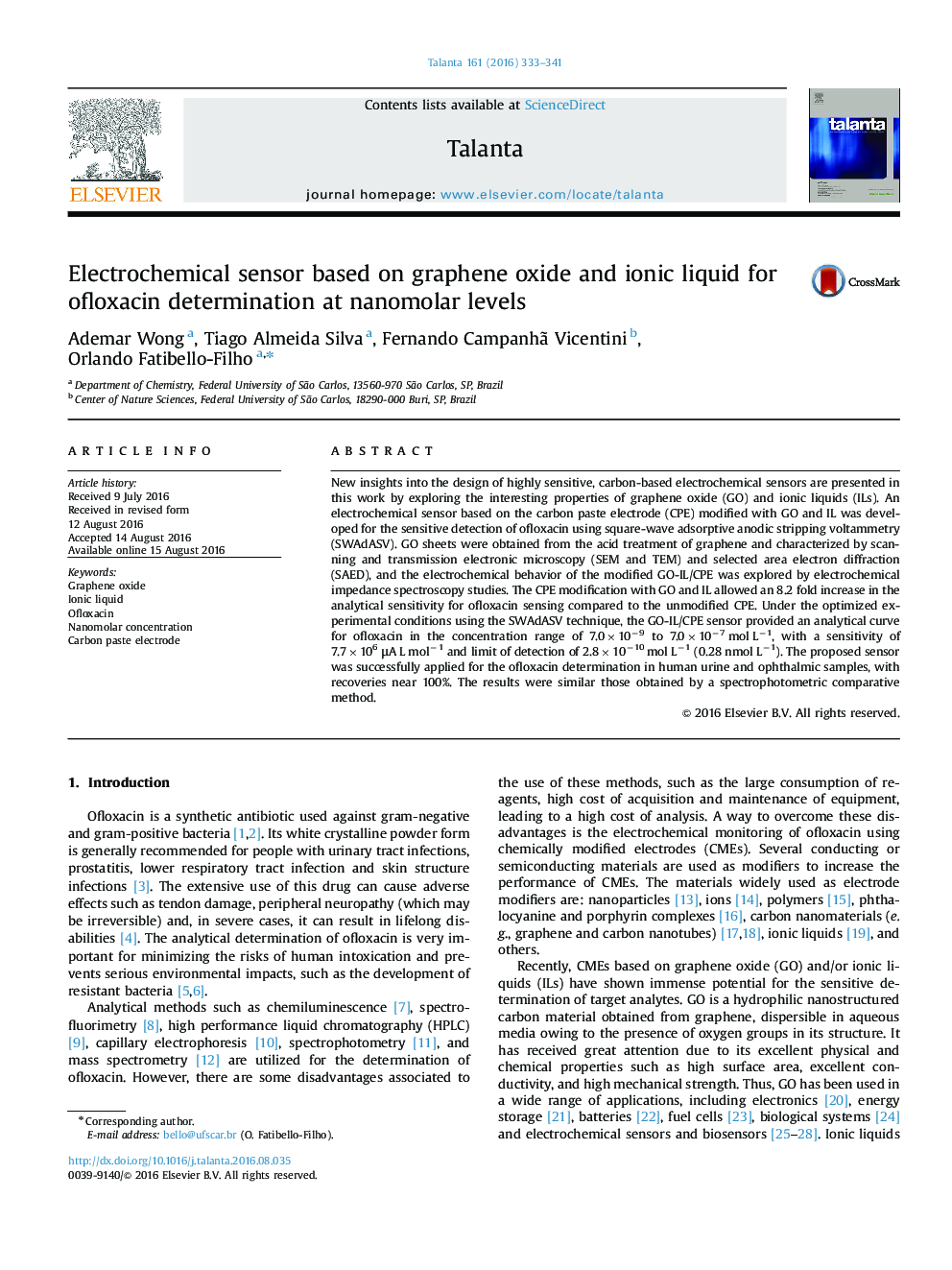| کد مقاله | کد نشریه | سال انتشار | مقاله انگلیسی | نسخه تمام متن |
|---|---|---|---|---|
| 1241722 | 1495775 | 2016 | 9 صفحه PDF | دانلود رایگان |
• Graphene oxide (GO) and ionic liquid (IL) employed as carbon paste modifiers.
• GO and IL provided a highly sensitive voltammetric method for ofloxacin determination.
• Ofloxacin is determined at nanomolar levels.
• Ofloxacin is quantified in pharmaceutical products and biological fluids.
New insights into the design of highly sensitive, carbon-based electrochemical sensors are presented in this work by exploring the interesting properties of graphene oxide (GO) and ionic liquids (ILs). An electrochemical sensor based on the carbon paste electrode (CPE) modified with GO and IL was developed for the sensitive detection of ofloxacin using square-wave adsorptive anodic stripping voltammetry (SWAdASV). GO sheets were obtained from the acid treatment of graphene and characterized by scanning and transmission electronic microscopy (SEM and TEM) and selected area electron diffraction (SAED), and the electrochemical behavior of the modified GO-IL/CPE was explored by electrochemical impedance spectroscopy studies. The CPE modification with GO and IL allowed an 8.2 fold increase in the analytical sensitivity for ofloxacin sensing compared to the unmodified CPE. Under the optimized experimental conditions using the SWAdASV technique, the GO-IL/CPE sensor provided an analytical curve for ofloxacin in the concentration range of 7.0×10−9 to 7.0×10−7 mol L−1, with a sensitivity of 7.7×106 μA L mol−1 and limit of detection of 2.8×10−10 mol L−1 (0.28 nmol L−1). The proposed sensor was successfully applied for the ofloxacin determination in human urine and ophthalmic samples, with recoveries near 100%. The results were similar those obtained by a spectrophotometric comparative method.
Figure optionsDownload as PowerPoint slide
Journal: Talanta - Volume 161, 1 December 2016, Pages 333–341
